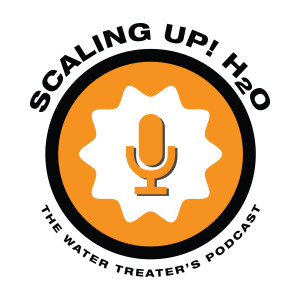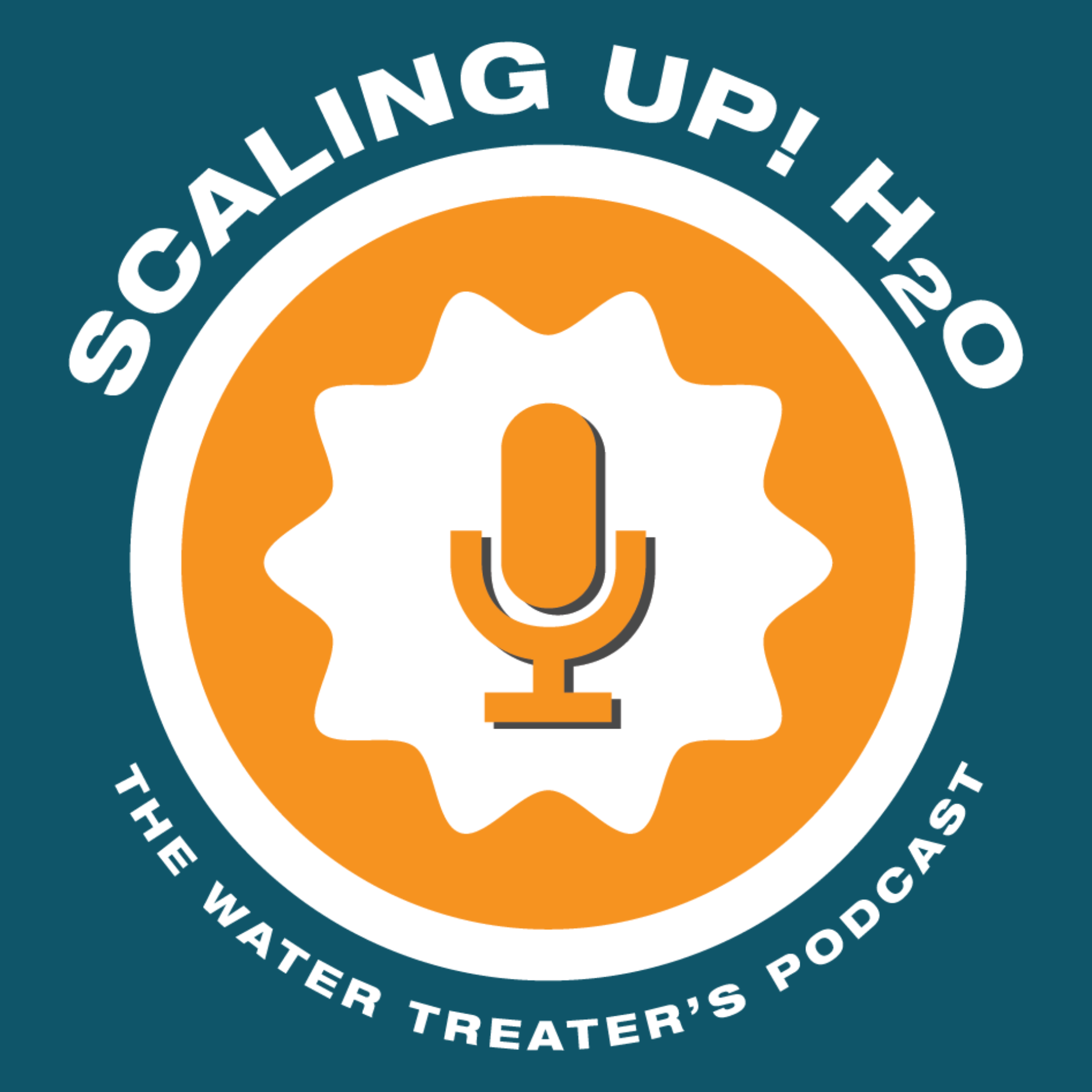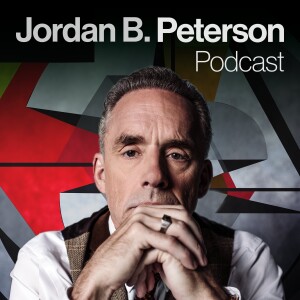

Episode List

428 Innovations in Water Treatment with Dr. Jasbir Gill
What happens when a nuclear chemist pivots into industrial water treatment? In this episode, host Trace Blackmore is joined by Dr. Jasbir Gill, President at Water Energy Solutions Inc, whose career spans five decades of breakthrough innovations in water chemistry and sustainability. From developing predictive modeling systems to creating new polymer standards, Dr. Gill shares how scientific rigor and practical experience came together to shape tools still used today. “We were not just saving water—we were calculating the true cost of energy and environmental impact.” From Nuclear Chemistry to Water Treatment Dr. Gill begins by tracing his academic roots in nuclear and inorganic chemistry from IIT Roorkee, followed by early post-doctoral research in Italy and England. While initially headed for a career in nuclear separations, a chance encounter rerouted his path to the U.S., where his work at SUNY Buffalo introduced him to the intricacies of water chemistry. That foundational knowledge laid the groundwork for his transformative career at Calgon, and later Nalco. The Birth of CalGuard: Predictive Modeling Ahead of Its Time In one of the most compelling parts of the episode, Dr. Gill walks us through the creation of CalGuard—an award-winning predictive modeling tool that transformed how chemical dosing and scaling behavior are calculated. Integrating thermodynamic principles, field data, and statistical regression, the CalGuard model helped standardize customized water treatment programs across regional chemistries and system variables. Defining the Water-Energy-Carbon Nexus A highlight of Dr. Gill’s later career came when he began asking hard questions about sustainability. How much energy is consumed per gallon of water saved? What’s the carbon footprint of that savings? He shares compelling stories of his work with nuclear power plants, showing how acid use for pH control contributed to CO₂ emissions—insights that later shaped his independent firm, Water Energy Solutions. From Chromate to Phosphate: Reinventing Treatment Chemistry When chromate was phased out of industrial water treatment, Dr. Gill was at the forefront of developing phosphate-based alternatives. He recounts the invention of the AAM 60/40 copolymer in his lab—now an industry standard—and how field trials and real-time testing guided product refinement. This section underscores how practical chemistry, adaptability, and client trust converge to move the industry forward. The J-Factor and Real-World Impact Dr. Gill explains his invention of the J-factor—a conversion metric allowing new inhibitors to be benchmarked against legacy ones. Developed through comparative field tests and algorithmic modeling, the J-factor exemplifies the intersection of empirical science and industry need, with wide applicability even decades later. Final Reflections: Leadership, Teamwork, and Lifelong Curiosity In the closing segment, Dr. Gill reflects on the importance of teamwork, adaptability, and focusing on one’s work amid organizational change. His stories—from field trips in Montana to building mobile labs for rapid field testing—reveal the human side of technical innovation. This episode is more than a lesson in chemistry—it’s a case study in innovation, leadership, and long-term thinking. Dr. Gill’s insights remind us that successful water treatment isn’t just about products; it’s about persistence, systems thinking, and data-driven action. Share this episode with colleagues committed to impactful, sustainable water management. Stay engaged, keep learning, and continue scaling up your knowledge! Timestamps 08:00 – Upcoming Events for Water Treatment Professionals 12:44 – Water You Know with James McDonald 15:35 – Interview with Dr. Jasbir Gill and his career origins in nuclear chemistry 17:05 – Transition to water chemistry and first role at Calgon in 1979 33:49 — Importance of J Factors in dosing and treatment conversions 49:16 — Creation of the AAMP copolymer and phosphate compatibility Quotes “Focus on your project… your work will carry you through every organization.” “I had no idea that J Factors came from Dr. Gill—and they actually stood for his first name, Jasbir.” “You never know what you're doing to help someone and what that’s going to create.” Connect with Dr. Jasbir Gill Phone: +1 630-346-6141 Email: thewesinc@gmail.com Linked In: https://www.linkedin.com/in/jasbir-gill-07766630/ Click HERE to Download Episode’s Discussion Guide Guest Resources Mentioned Sapiens (10 Year Anniversary Edition) by HARARI YUVAL NOAH Leonardo's Notebooks: Writing and Art of the Great Master (Notebook Series) by Leonardo Da Vinci A History of the Sikhs by Khushwant Singh Dr. Gill joined Calgon Corporation Scaling UP! H2O Resources Mentioned AWT (Association of Water Technologies) Scaling UP! H2O Academy video courses Submit a Show Idea Water You Know with James McDonald Question: What do we call the ratio between the amount of dissolved solids in a system water and the amount of dissolved solids in that system's makeup water? 2025 Events for Water Professionals Check out our Scaling UP! H2O Events Calendar where we’ve listed every event Water Treaters should be aware of by clicking HERE.

427 July 4th! Entrepreneurship, Water Wells, and the Spirit of Liberty
“Give Me Liberty or Give Me Death!” - Patrick Henry Honoring Innovation, Freedom, and Small Business on the 4th of July In this special Independence Day episode of Scaling UP! H2O, host Trace Blackmore brings you a rich blend of patriotism, professional insight, and entrepreneurial spirit. Opening with reflections on July 4th traditions—from fireworks to parades—Trace sets the stage for a compelling conversation with Jack Clark, Owner and Founder of 180 Water. As the water industry faces growing demand and generational turnover, Jack offers a bold solution: a replicable franchise model designed to preserve institutional knowledge and sustainably expand access to clean water. A Rancher Turned Water Well Visionary Jack shares his origin story, from growing up on a ranch in Montana to launching a water well drilling company that now spans multiple states. What started with a neighbor’s influence and a deep respect for self-reliance evolved into a career in well drilling—and eventually, a scalable business framework. Jack walks us through the unique challenges of finding water in fractured rock regions and explains how field wisdom, data monitoring, and humility define success. Franchising in the Water Sector: Solving the Knowledge Drain As the industry grapples with aging experts nearing retirement, 180 Water is addressing a critical issue: the loss of operational and geological expertise. Jack reveals how his team is onboarding retiring professionals as equity partners to serve as regional hubs, blending mentorship with modern operations. Their approach enables local ownership, data collection, and scalable customer service, while preserving regional nuances in well drilling. Lessons in Leadership, Accountability, and Resilience Jack emphasizes that real growth stems from reflection, mentorship, and integrity. He discusses how accountability—rooted in ranch life—translates into transparent client relationships, responsible site practices, and support systems that empower franchisees. His goal? To build a network of highly trained, values-aligned professionals who ensure the longevity and safety of our groundwater resources. The Spirit of Liberty: Patrick Henry’s Enduring Speech In a moving tribute to Independence Day, Trace closes the episode with a complete reading of Patrick Henry’s “Give Me Liberty or Give Me Death” speech. Listeners are reminded of the courage it takes to challenge the status quo and the unifying power of respectful discourse—values that echo through today’s challenges in water, business, and beyond. Final Takeaway This episode isn’t just about wells—it’s about vision, responsibility, and the courage to lead. Jack Clark’s journey inspires water professionals to think bigger, act with purpose, and consider scalable solutions to systemic industry issues. Be sure to check our events page for upcoming water conferences and symposiums to continue growing your expertise. Stay engaged, keep learning, and continue scaling up your knowledge! Timestamps 02:20 - Trace Blackmore shares his warm greetings to Scaling UP! Nation this 4th of July! 07:27 - Upcoming Events for Water Treatment Professionals 10:37 - Water You Know with James McDonald 12:53 - Introduction with Jack Clark of 180 Water 18: 07 - Jack transitioned from expansion by employment to a franchise model Quotes Jack Clark: “If you don’t get your chores done on the farm, things don’t eat. And so it’s important to make sure that you can be counted on.” “I was sending my best guys to the worst projects, my worst guys to the best projects—and no one was happy.” “You know how to run your business. You were successful at that. But we want to help you scale it with support and mentorship.” “There’s not a perfect science to well drilling. Sometimes you find the water. Sometimes you don’t. But that’s the responsibility we take on.” Trace Blackmore: “I really believe that the backbone of our country is small business and entrepreneurship.” “I hope we realize we have way more in common than we do differences—and that we enter conversations with curiosity instead of judgment.” Connect with Jack Clark Phone: +406 465 4791 Email: jack.clark@180water.com Website: 180 Water LinkedIn: 180 Water: Overview | LinkedIn Click HERE to Download Episode’s Discussion Guide Guest Resources Mentioned Freakonomics: A Rogue Economist Explores the Hidden Side of Everything by Steven D. Levitt, Stephen J Dubner Scaling UP! H2O Resources Mentioned AWT (Association of Water Technologies) Scaling UP! H2O Academy video courses Submit a Show Idea The Rising Tide Mastermind Water You Know with James McDonald Question: How many ppm of sodium sulfite does it take to react with one ppm of oxygen? 2025 Events for Water Professionals Check out our Scaling UP! H2O Events Calendar where we’ve listed every event Water Treaters should be aware of by clicking HERE.

426 Sustaining Success: Tom Hutchison on Leading Through Generational Change
In this episode, Trace Blackmore welcomes back Tom Hutchison, Chairman of the Board, HOH Water Technology, to reflect on what it really takes to step out of day-to-day leadership—and do it well. As a multi-decade leader in water treatment, Tom shares the personal, professional, and organizational insights that shaped his transition from CEO to chairman and what it means to lead a business into its next generation. From early succession conversations to the unspoken anxieties of staff, Hutch offers a rare look behind the curtain of legacy-building in industrial water treatment. And as private equity plays a growing role in the industry, Tom unpacks the very real choices facing owners and teams alike—with clarity and compassion. Navigating Leadership Through Change Tom begins by describing the decision to shift from day-to-day leadership to a board-level role. He reflects on the emotional weight of that process and the internal work required to detach his identity from his title. Rather than clinging to authority, he outlines the importance of trust and letting emerging leaders find their voice—even when it means they’ll make different decisions. He also highlights the human cost of poor planning. “Death,” as Tom puts it bluntly, “is not a strategy.” Waiting too long or failing to mentor successors doesn't just disrupt the business—it risks unraveling everything you've built. Succession Planning and Cultural Continuity Trace and Tom dive into the mechanics of succession planning—not just from an ownership perspective, but a cultural one. Tom explains how HOH built an internal environment where values weren’t just posted on the wall but deeply lived. This foundation allowed the company to navigate major transitions, including its eventual move into private equity, without losing its identity. He also warns about the consequences of delayed planning. Waiting too long, he says, puts the business, its people, and its principles at risk. Preparing for Private Equity—Without Losing Yourself One of the most practical parts of the conversation centers on HOH’s private equity journey. Tom shares how they vetted buyers not just for financial capacity, but for cultural alignment. He outlines how his team clarified their mission and values before the deal, which ultimately helped preserve their vision after the transition. Rather than resist change, HOH treated the shift as an opportunity to reinforce their core—while expanding their reach. The Long Arc of Legacy Tom closes with a powerful meditation on leadership legacy. He explains that real legacy isn’t about being remembered—it’s about ensuring the business can thrive without you. He challenges listeners to think beyond titles, financial outcomes, or even strategy, and focus on the enduring impact of culture, mentorship, and examples. Trace echoes this with a reminder that great leaders not only lead—they leave well. If you're leading a team, planning your exit, or preparing the next generation of leadership, this episode is a must-listen. To take this conversation further, download the Discussion Guide located in the Connect with the Guest section of the show notes. Stay engaged, keep learning, and continue scaling up your knowledge! Timestamps 02:46 – Opening the episode, Trace reflects on the concept of the “butterfly line”—that uncomfortable but powerful moment right before growth happens 07:10 – Water You Know with James McDonald 09:08 – Upcoming Events for Water Treatment Professionals 11:49– Guest Intro: Tom “Hutch” Hutchison Returns 12:35 – Stepping Down in 2020: How the Pandemic Helped 17:17 – Private Equity’s Growing Role in Water Treatment 20:04 – The 5 Ownership Transition Paths 36:01 – Your Company is an Asset, not just a Job 42:00 – A New Mission: To Encourage and Inspire Quotes “The longer you put it off, the fewer options you have. And probably, the more unsettled your employees might be.” “You don’t have to suffer for the first time alone. If someone’s already done it, learn from them and do it better.” “Business is both a job and an asset. If you only treat it as a job, you’re leaving value on the table.” “I think I’m still figuring it out—but in this next season, I want to encourage and inspire.” “You can start at step five if someone else already figured out the first four—just polish it and give it back.” Connect with Tom Hutchison Phone: +18474367403 Email: hutch@hohwatertechnology.com Website: HOH Water Technology - Water Treatment Solutions LinkedIn: https://www.linkedin.com/in/thomasfhutchison/ Click HERE to Download Episode’s Discussion Guide Guest Resources Mentioned Alexander Hamilton by Ron Chernow Halftime: Moving from Success to Significance by Bob P. Buford Harry Potter Paperback Box Set (Books 1-7) by J.K. Rowling King: A Life by Jonathan Eig Strong and Weak: Embracing a Life of Love, Risk and True Flourishing by Andy Crouch The Ideal Team Player: How to Recognize and Cultivate The Three Essential Virtues (J-B Lencioni Series) by Patrick M. Lencioni The Lord of the Rings: 50th Anniversary, One Vol. Edition by J.R.R. Tolkien The Little Liar: A Novel by Mitch Albom Scaling UP! H2O Resources Mentioned AWT (Association of Water Technologies) Scaling UP! H2O Academy video courses Submit a Show Idea The Rising Tide Mastermind 166 The One Where We Celebrate Halloween 325 Rising Together: Conquering Challenges through Collective Support 127 The One With Tom Hutchison Water You Know with James McDonald Question: What is defined as the acid-absorbing property of water? 2025 Events for Water Professionals Check out our Scaling UP! H2O Events Calendar where we’ve listed every event Water Treaters should be aware of by clicking HERE.

425 Smart Technology in Water Treatment with Kevin Kuhne
“You don't have to transition your entire business. You just need to start. Small beginnings are okay.” Revolutionizing Water Treatment Through Smart Tech In this episode of Scaling UP! H2O, host Trace Blackmore welcomes Kevin Kuhne, Founder and President of Energy Resource Products, LLC, for a deep-dive conversation on the emerging role of smart technology and artificial intelligence in water treatment. With decades of experience leading tech-driven innovation, Kevin unpacks how intelligent systems, edge computing, and real-time data processing are reshaping operations in the field—from cooling towers to complex distribution networks. Whether you’re managing plant performance or driving strategic growth, this episode offers a credible look into the future of industrial water management. From Controllers to Edge-Based Intelligence Kevin introduces the evolution of traditional controllers into what he calls “computers at the edge.” These intelligent systems collect real-time data, deliver predictive alerts, and can execute secure firmware updates—all without requiring field visits. This shift eliminates the dependency on gateways and streamlines site management through centralized dashboards, saving time and resources. He illustrates how these systems not only detect pump failures before they occur but also reduce chemical overdosing incidents by offering immediate visibility into feeder issues and sensor discrepancies. Breaking the Barrier: Selling Smart Tech to Stakeholders One of the recurring challenges in adopting new technology is overcoming skepticism—especially from IT teams and procurement stakeholders. Kevin outlines strategies for simplifying the sales conversation: focus on specific ROI outcomes like labor savings, chemical usage reduction, and improved equipment uptime. He also breaks down how modern security protocols and machine-to-machine communication are easing concerns around connectivity and data protection. AI and the Cloud: Turning Data into Action The discussion advances into how AI-enabled platforms now process disparate data streams in the cloud to support smarter decision-making. Rather than waiting for weekly reports, professionals can now access dynamic dashboards and build customized data visualizations to proactively manage client sites from any location. Kevin emphasizes that this shift empowers service professionals, not replaces them. By removing manual data bottlenecks, smart tech allows for more impactful engagement and long-term client retention. Future-Proofing the Industry Kevin predicts a near future where IO configurations fade, sensors become brand-agnostic, and user interfaces resemble common mobile apps. He encourages water professionals to begin small—pilot smart technology in a single location, gather feedback, and use those wins to accelerate broader adoption. He closes with a message for early-career professionals: embracing smart technology from the start will enable them to deliver higher value and grow their impact in the industry. Conclusion As industries move toward intelligent infrastructure, water professionals must adapt. This episode provides a grounded, expert-led perspective on how to practically and securely implement these technologies. For technical managers, engineers, and company leaders, this is a timely and strategic conversation you won’t want to miss. Stay engaged, keep learning, and continue scaling up your knowledge! Timestamps 01:38 – Trace Blackmore shares a reflection on sharks and ecosystem sustainability, tying into the episode’s broader theme of technology and responsible action. 10:06 – Water You Know with James McDonald 11:30 – Upcoming Events for Water Treatment Professionals 14:08 – Interview with Founder, President, and Coach Kevin Kuhne of Energy Resource Products 16:11 - Kevin defines smart tech, contrasting traditional controllers with edge-based computing that delivers real-time data, predictive analysis, and remote access 33:10 — Future technology trends 36:12 — Message for newcomers: Kevin encourages young professionals to embrace tech as a tool for empowerment, not a threat Quotes “Your customer is already integrating AI in other parts of their business. If we’re not doing it, someone else will.” “Security is the real roadblock, but if the equipment has a computer-type base of operation, IT is far more comfortable.” “Smart tech is identifying those areas that we can enhance information, translate it, and then act on it.” Connect with Kevin Kuhne Phone: 17632263945 Email: kevin@energyresourceproducts.com Website: www.energyresourceproducts.com LinkedIn: www.linkedin.com/in/kevin-kuhne-1812626 Click HERE to Download Episode’s Discussion Guide Guest Resources Mentioned 12 Rules for Life: An Antidote to Chaos: Jordan B. Peterson The Problem of Pain by C.S. Lewis A Christmas Carol (Collins Classics) by Charles Dickens Scaling UP! H2O Resources Mentioned AWT (Association of Water Technologies) Scaling UP! H2O Academy video courses Submit a Show Idea The Rising Tide Mastermind AWT Technical Training (Coming Soon - 2026) 422 Inside the Association of Water Technologies with John Caloritis Water You Know with James McDonald Question: What is the breakpoint chlorination ratio of chlorine to ammonia required to reach a true free chlorine residual? 2025 Events for Water Professionals Check out our Scaling UP! H2O Events Calendar where we’ve listed every event Water Treaters should be aware of by clicking HERE.

424 Chlorine Dioxide Insights with Greg Simpson
A Lifelong Exploration into Chlorine Dioxide In this episode of Scaling UP! H2O, Trace Blackmore welcomes Greg D. Simpson, a recognized authority on chlorine dioxide and a long-time researcher, writer, and technologist in the industrial water treatment space. With decades of hands-on experience and a personal archive of thousands of technical papers, Greg brings unmatched depth to this essential conversation. From Field Trials to File Cabinets Greg takes us through his early career, from being tasked to explore chlorine dioxide as an alternative disinfectant on the Gulf Coast to becoming a dedicated advocate of its power and versatility. He explains why chlorine dioxide often outperforms traditional biocides like bromine and chlorine, especially in complex environments such as refineries, hospitals, and cooling towers. Comparing Monochloramine and Chlorine Dioxide A central theme in the episode is Greg’s recent research comparing monochloramine and chlorine dioxide. He shares real-world case histories, including treatments at major institutions and breaks performance differences in terms of biofilm penetration, disinfection byproducts, and residual impact. He also discusses regulatory hurdles, competitive dynamics, and what the literature says about long-term microbiological effects. Building Disinfection Systems and Emerging Applications The episode explores chlorine dioxide’s expanding role in building disinfection, especially healthcare facilities. Greg shares how generator technologies are changing the game, while also diving into regulatory constraints in places like Texas. He further explains the promising potential of chlorine dioxide in air disinfection and surface sanitation, drawing from both studies and practical implementations. A Legacy of Learning From assembling four filing cabinets of technical papers to writing multiple books and collaborating with other industry pioneers, Greg's story is one of relentless inquiry. His work continues to influence how the industry thinks about safe and effective disinfection strategies. Conclusion Greg Simpson’s insights go far beyond operational know-how. This episode is a masterclass in both the science and history of chlorine dioxide in industrial applications. For professionals seeking to deepen their understanding of advanced water treatment chemistry, this conversation is essential. Call-To-Action Explore more episodes of Scaling UP! H2O to stay current on the science, tools, and trends shaping industrial water treatment. Continue the conversation with peers, and never stop learning. Stay engaged, keep learning, and continue scaling up your knowledge! Timestamps 04:13 – Water You Know with James McDonald 05:28 – Upcoming Events for Water Treatment Professionals 07:43 – Trace starts the interview with introduction of the master of all things – Chlorine Dioxide 16:25 – Trace asks about paper presented at the Association of Water Technologies chlorine dioxide versus chloramine, a review 31:30 – Benefits of Chlorine Dioxide in Pulp Bleaching and reduced environmental toxicity 36:04 – Chlorine dioxide vs. Monochloramine in hospital water systems and Legionella prevention 41:08 – Advice for Professionals Quotes “Find an area to focus on and know more about that than anybody else.” “Chlorine dioxide doesn’t differentiate too much between the walls and what’s in bulk water.” “When we changed to chlorine dioxide, it was five or six months before we saw a residual at the other end of our distribution system.” “Chlorine dioxide does not chlorinate directly any organic.” Connect with Greg D. Simpson Phone: +17132060250 Email: greg@clo2guy.com Website: PureLine Click HERE to Download Episode’s Discussion Guide Guest Resources Mentioned Chlorine Dioxide vs. Monochloramine: A Review technical paper Practical Chlorine Dioxide: Volume I – Foundations Practical Chlorine Dioxide: Volume II - Applications Practical Chlorine Dioxide: Volume III - Oil and Gas A Focus on Chlorine Dioxide: The "Ideal" Biocide technical paper The Safe and Effective Use of Chlorine Dioxide technical paper Biofilm: Removal and Prevention with Chlorine Dioxide technical paper Scaling UP! H2O Resources Mentioned AWT (Association of Water Technologies) Scaling UP! H2O Academy video courses Submit a Show Idea Water You Know with James McDonald Question: Which water analysis measures the concentration of hydrogen ions in water? 2025 Events for Water Professionals Check out our Scaling UP! H2O Events Calendar where we’ve listed every event Water Treaters should be aware of by clicking HERE.
Create Your Podcast In Minutes
- Full-featured podcast site
- Unlimited storage and bandwidth
- Comprehensive podcast stats
- Distribute to Apple Podcasts, Spotify, and more
- Make money with your podcast












